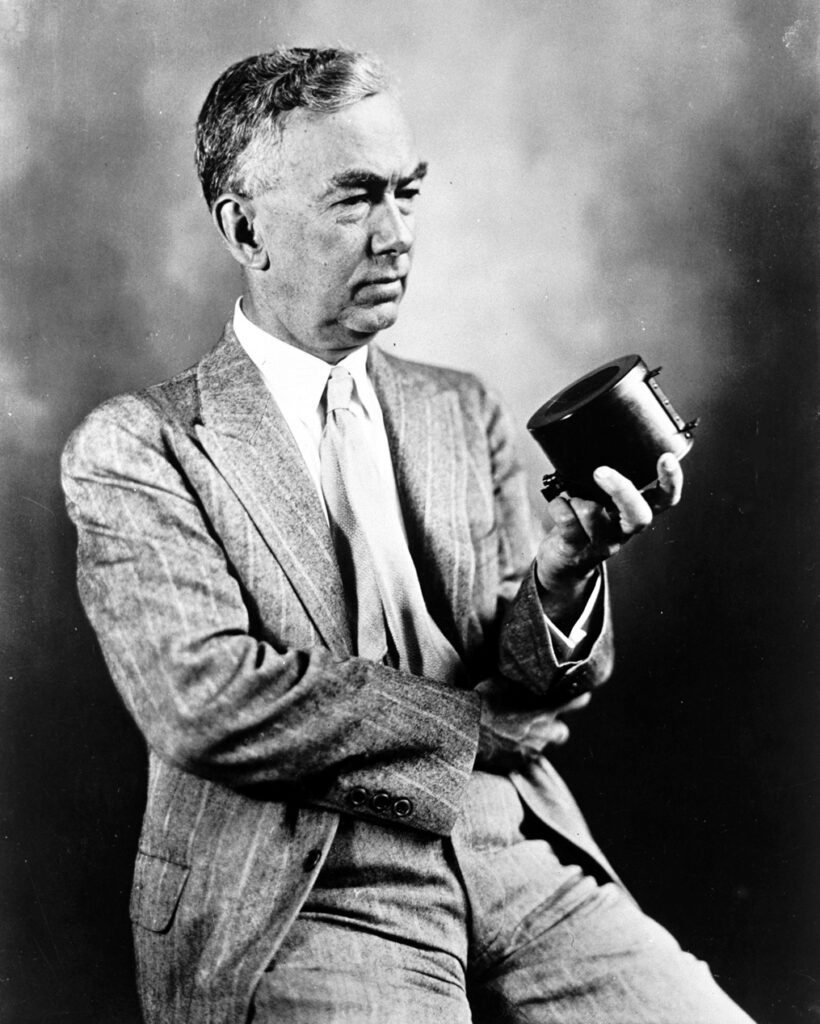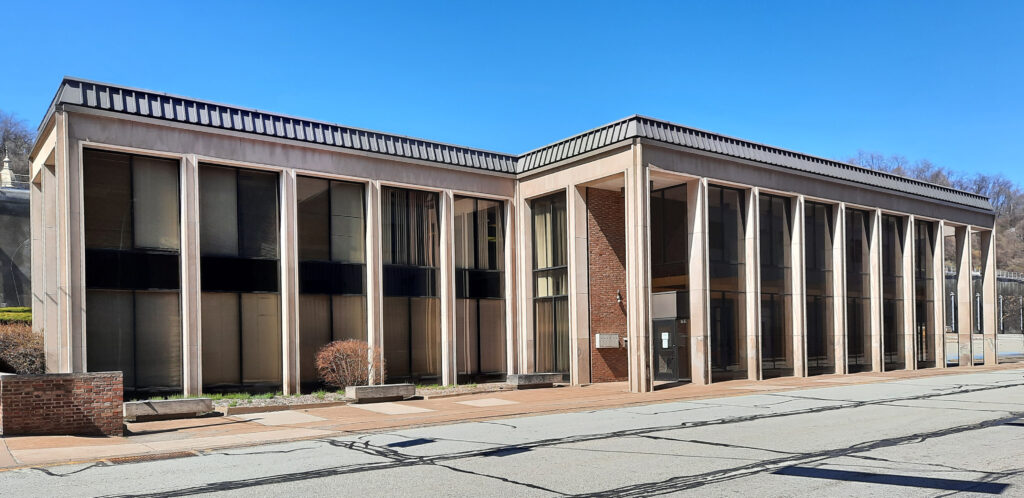With her long career in radio broadcasting and communications, Susie Barbour recognizes Frank Conrad as the Father of Commercial Radio Broadcasting. And really, she says, the Pittsburgh native’s genius that earned 200 patents led to all the mass media we know today.
She and her fellow board members for the National Museum of Broadcasting, a Pittsburgh initiative, want all of Pittsburgh and beyond to know this, too. So this Saturday from 1 to 4 p.m. they have organized a free public event, “Making Waves: The 150th Birthday Celebration for Frank Conrad,” at the newly restored and renovated Wilkinsburg Train Station.
Conrad, born May 4, 1874, is credited with developing the transmitter that launched the first commercial radio broadcast in a shack atop the Westinghouse Electric and Manufacturing Co. in nearby East Pittsburgh. He worked on it in his two-story brick garage at his Wilkinsburg home in 1920, according to a news release announcing the event.
Jamie Conrad, a Washington, D.C.-based attorney, will be a guest along with his cousin Frank Conrad at the birthday party and will talk about his great-grandfather and his innovative work. His brother actor David Conrad, who lives part of the year in Pittsburgh, cannot attend because of a conflict. Jamie Conrad, and the board of directors of the National Museum of Broadcasting, will present at the event the inaugural Frank Conrad Award for Broadcast and Electronic Media Innovation to a Pittsburgher whose work emulates the creativity and fortitude of Frank Conrad.
The birthday celebration will include a display and demonstrations of broadcast artifacts and memorabilia, a silent auction of donated sports and broadcast items, music and entertainment by DJ Sims, and refreshments, including, of course, birthday cake.
A highlight will be a panel discussion with Pittsburgh broadcasting icons: former KDKA Radio morning host Jack Bogut, retired WTAE-TV news anchorwoman Sally Wiggin, and current host of WPXI-TV’s “Our Region’s Business,” Bill Flanagan. WQED-FM’s Jim Cunningham, a longtime radio host, will moderate.
The National Museum of Broadcasting in Pittsburgh is a 501(c)(3) nonprofit organization dedicated to the preservation of radio, television and related broadcast and electronic industries, based in the city where broadcasting began in 1920.
On Nov. 2, 2023, the museum’s board of directors, along with community leaders and elected officials, announced they had found a site for a permanent museum at a former bank building at 701 Braddock Ave. in East Pittsburgh, near where broadcasting started. This fundraiser is a first start for the National Museum of Broadcasting to raise awareness and the funding to buy the building and begin museum construction, according to the news release. The Regional Industrial Development Corp. owned the “shack” and the related structures where the first broadcast began because those structures were on the site of what is across the street at Keystone Commons, which is part of the RIDC. The board knows it was more than 100 years old at the time of its demolition.
Barbour worked for 19 years as on-air talent at KDKA as a DJ and talk show host when it was part of Group W, a Westinghouse Broadcasting station. She began her Pittsburgh career at WTAE and 96KX, on air at both for 11 years, and also worked at Magic 97. Her corporate career included six years in communications at Westinghouse headquarters, and then she worked as a vice president of marketing and communications for Hefren-Tillotson and co-hosted its popular financial radio show, “Your Money & You,” for 16 years on KDKA-AM radio.
She learned about a group of Westinghouse retirees dedicated to volunteering that formed a nonprofit group, Westinghouse SURE, and she joined it in 2014 when she retired. Barbour has been its director of communications since 2015. That organization — and a 2020 garage sale at her home — led her to become involved with the museum and its efforts to preserve Frank Conrad’s garage and recognize his and Pittsburgh’s rightful place in broadcast history.
In addition to knowing the efforts of longtime broadcaster Bill Hillgrove to save that garage and more, “I had been reading about dedications and plaques [for Frank Conrad and the KDKA Radio 1920 broadcast]. And I have a deep interest in all things radio,” Barbour said. The latter led her to collect old radios and a pristine old television set. When Richard Harris, a historical preservationist who has worked for decades to save that garage and collect radio artifacts for a national museum here, arrived at her sale, he haggled with her over the price of that TV.
That conversation led her to advocate for Westinghouse SURE sponsoring, along with Duquesne University, the museum’s 100th anniversary of KDKA Radio’s Nov. 2, 1920, first commercial broadcast, which focused on the Harding-Cox presidential election returns. Barbour joined the board, “along with other talented individuals,” and the group has made significant progress toward finding a permanent home for the dismantled garage and “an amazing collection of electronic media artifacts,” all of which are currently in storage.
The 2020 event at Keystone Commons, which included a re-enactment of the first broadcast, was “just lovely,” Barbour said, who had been researching and writing about Frank Conrad for years. She was interviewed especially about her perspective, “which comes more from the Westinghouse view.”
Barbour easily recounts Frank Conrad’s career, which started at Westinghouse as a bench hand when he left school after seventh grade. He was recognized for his talent and work, earning his first patent for a watt meter at 24, a version of which still exists today and continues to measure electricity use in homes and businesses. She called him a genius who had those 200 patents at the end of his working life for everything from electric clocks to radio transmitters and receivers to car ignition systems.

Frank Conrad’s work and early experimental broadcasts, which involved his wife and sons, on ham radios and crystal radio sets made him one of the first radio DJs, she said, and someone who realized radio — it had at that point and through World War I been used for point-to-point communication — had commercial potential. He and Westinghouse proved it with that 1920 broadcast and all the firsts that followed for the station. Harris documented his contributions and how the workshop was saved from demolition for the Pittsburgh Antique Radio Society in this article. The Library of American Broadcasting Foundation produced a video featuring KDKA Radio newsman Larry Richert that explains that first broadcast and what followed that is posted on the museum’s website with an accompanying article.
Barbour said the Westinghouse assistant chief engineer — and there’s a story behind that title, too — received many, many recognitions and honors for his work, including an honorary doctorate from the University of Pittsburgh. What she is looking forward to seeing is a collection of awards and photos Jamie Conrad found that he will display this Saturday.
A subset of the board planned the event. Barbour said Jeanne McNutt found the venue, and others have contributed silent auction items. Prime among them: tickets to see opera star Renee Fleming at the Met in New York City, access to a meet and greet event with her, and a signed copy of her recent memoir. Hillgrove has donated a boat ride with him and lunch at the Iroquois Club at Conneaut Lake.
The board has not set a fundraising goal for this event or its other activities, nor has it disclosed a purchase price for the East Pittsburgh bank building, which has a second floor and a basement, except to say it is a fair price the RIDC, which owns it, has set. Barbour said the board is grateful to state Sen. Jay Costa, D-Forest Hills, for his help in securing the site and working with it on state grants, as it is estimated to cost millions for the building’s purchase and renovations. As the board works on its formal business plan, it knows exhibit space could cost anywhere between $85 and $135 per square foot, and it has not yet tallied expenses for educational spaces for students. Contributions and grants have been enough to keep the dismantled garage and artifacts in storage.
Barbour and her fellow board members can’t wait to move forward. “Let’s get into our own building and get the archives out of storage,” she said. To do so, “We need the public to help and people around the country to help. It’s a pretty compelling story. The mass media really started right here in Pittsburgh: AM and FM radio, television, satellite and digital broadcasts. … We’re trying to be patient, and we want to keep ourselves out there with events like this. We want to let people know what we are doing and build advocates for our cause.”
The museum had asked for reservations by last Monday to ensure it will have enough refreshments for attendees. But people can still RSVP via the museum’s website. Donations for the museum can be made there, as well. Parking is located adjacent to the train station, 901 Hay St., Pittsburgh, PA 15221.

Helen is a copy editor at the Pittsburgh Post-Gazette, but she's currently on strike. Contact her at hfallon@unionprogress.com.



